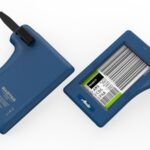
Alaska Airlines to Launch Electronic Bag Tag Program
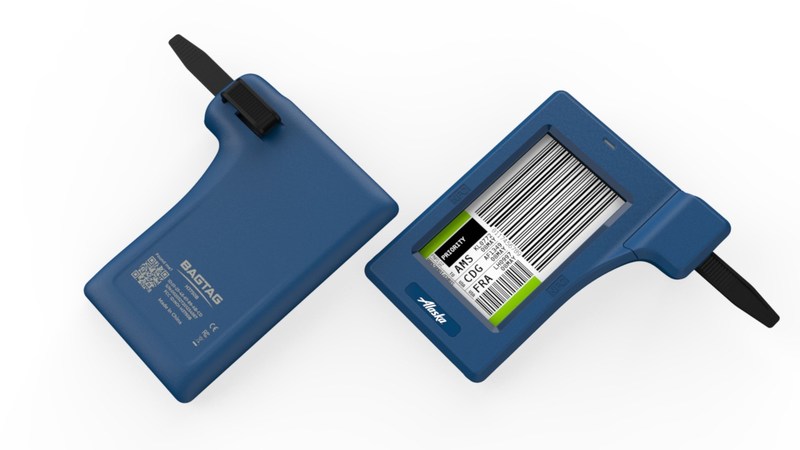
Alaska Airlines has become the first U.S.-based airline to commit to introducing an electronic bag tag program, according to a July 19 announcement.
The Alaska Air Group subsidiary has partnered with BagTag, a digital tag maker based in The Netherlands whose paperless bag tracking technology is already in use with several Lufthansa Group carriers, China Southern, and KLM. According to Alaska, the tags are connected to individual airline mobile applications and can be activated up to 24 hours prior to flight departure.
Each tag features an embedded antenna and does not require recharging, according to BagTag’s website, which prices its “Fix” version of the tag at €57,81.
Charu Jain, senior vice president of merchandising and innovation for Alaska Airlines, commenting on the new program, said that the technology will allow the airline’s passengers to “to tag their own bags in just seconds and makes the entire check-in process almost all off-airport.”
Introduction of the new bag tag technology comes several months after Alaska opened a technology incubator hub in San Jose, California. The research hub has been tasked with developing new approaches to digitally transforming the air travel experience with a focus on airports. San Jose International is also the launch airport for the rollout of the new technology.
“Alaska Airlines is the first U.S. airline to pioneer this innovative electronic bag tag program here at SJC,” said San José Mayor Sam Liccardo. “This program will modernize the check-in process and provide a more sustainable option for travelers.”
Alaska plans on rolling the new bag tags out in two phases; starting later this year, they will be distributed to 2,500 of their frequent fliers. Starting in early 2023, the electronic bag tags will then become available for purchase to Alaska’s Mileage Plan members.

#CAIPODCAST Ep. 84: OneWeb, SpaceX, and Telesat Answer LEO In-Flight Connectivity Questions

On this episode of the Connected Aviation Intelligence Podcast, executives from OneWeb, SpaceX, and Telesat discuss the future of Low Earth Orbit (LEO)-powered in-flight connectivity for commercial airlines and business jet operators during an hour-long session at the 2022 Connected Aviation Intelligence Summit.
Would LEO satellite networks be capable of providing connectivity to every airborne aircraft in U.S. airspace simultaneously at any given time in the future? Will more airlines be receptive to SpaceX’s direct-to-airline LEO IFC equipment and service business model? What type of connection speeds and improvements in latency can LEO provide for connected in-flight passenger sessions? Will LEO satellites provide connectivity to airlines that fly polar routes?
During this exciting session recorded live during the Connected Aviation Intelligence Summit last month, the following executives answer the above listed questions and more:
- Jonathan Hofeller, VP, Starlink Commercial Sales, SpaceX
- Philippe Scherlet, VP, Aviation, Telesat
- Jason Sperry, Market Development Director, Business Aviation, OneWeb
Listen to this episode below, or check it out on iTunes or Google Play. If you like the show, subscribe on your favorite podcast app to get new episodes as soon as they’re released.

#CAIPODCAST Ep. 83: Air Canada 787 Pilot Talks Aero HygenX and Autonomous Aircraft Disinfection

On this episode of the Connected Aviation Intelligence Podcast, JP Floyd, Air Canada 787 Pilot and Senior Director of Compliance and Standards for Aero HygenX, joins to discuss autonomous aircraft disinfection technology.
Aero HygenX is a Canadian tech startup founded by pilots and experts in aircraft maintenance. The company has developed an autonomous robot called “Ray” that uses UV-C technology and motion sensors to self-navigate the aircraft cabin while disinfecting air and surfaces throughout. Several airlines including Avelo Ethiopian Airlines and Zambia Airways have adopted their robot disinfection technology.
Floyd also provides some perspective on some of the challenges of flying throughout the pandemic over the last two years as well as some of the goals Aero HygenX wants to achieve with its disinfection technology.
Listen to this episode below, or check it out on iTunes or Google Play. If you like the show, subscribe on your favorite podcast app to get new episodes as soon as they’re released.

Qatar Airways to Equip 777X Fleet with Astrova IFE System
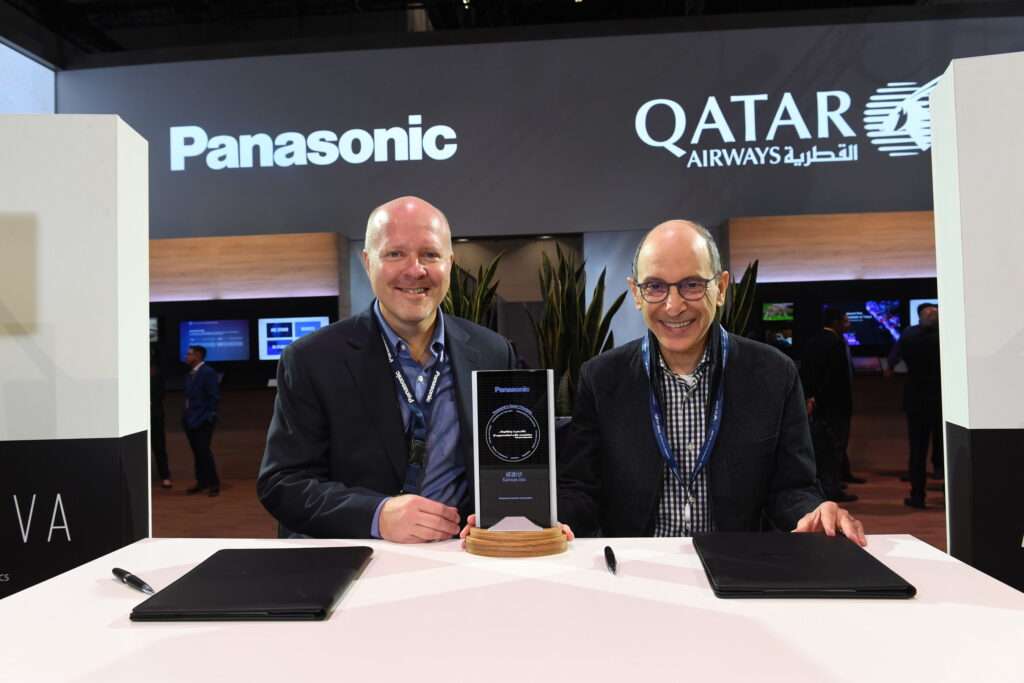
Qatar Airways will equip its fleet of Boeing 777X aircraft with the Astrova in-flight entertainment (IFE) system supplied by Panasonic Avionics, according to an announcement made by the two companies during the 2022 Aircraft Interiors Expo (AIX) in Germany.
Under the agreement, all 40 of the 777X jets on order for Qatar will feature the Astrova 4K OLED seatback system, including 13-inch screens in economy and 22-inch screens in business class. The 777X fleet operated by Qatar will be the first aircraft type to feature Panasonic’s new Astrova IFE technology.
Qatar Airways Group CEO Al Baker commented on the IFE selection for the 777X fleet, describing it as “cinema-grade, 4K OLED clarity that will captivate them when watching our latest blockbusters using Oryx One IFE system.”
AIX was also the first public announcement of the new Astrova system from Panasonic, which describes the technology as being capable of providing more personalization and immersion into the seatback IFE experience for individual airlines and their passengers. Some of the unique features of Astrova include a dedicated 67W USB-C port, removable peripheral bar, and access to passengers’ personal subscription services and content such as Apple Music, Spotify, Netflix, Disney+, YouTube, and HBO Max.
Qatar Airways is the launch customer of the 777X, which Boeing now expects to be ready for entry-into-service by 2025.

Lufthansa Launches FlyNet App to Make In-Flight Internet Purchasing Easier
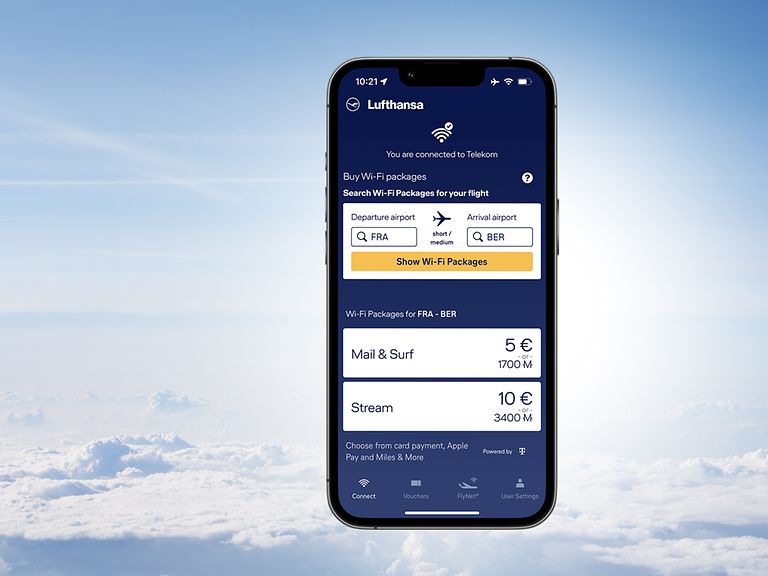
Lufthansa has rolled out a new smartphone application developed by Deutsche Telekom called “FlyNet” designed to make the purchasing and use of in-flight internet on short- and long-haul flights a three-step process for passengers.
FlyNet is accessed by passengers on their Android or iOS devices and allows them to purchase Lufthansa’s in-flight Internet packages “at any time before or during the flight,” according to a June 28 announcement of the rollout. The German telecommunications provider is also allowing logins to the app through Lufthansa’s “Miles and More” frequent flyer program.
A key aspect of FlyNet highlighted by Deutsche Telekom is how it allows passengers to purchase an in-flight internet access package prior to boarding.
“Most airline passengers find the use of Wi-Fi on board still complicated, that’s why we made it our goal to simplify the experience from the ground up. In-flight connectivity should work like the internet at home, be easily accessible and create additional value for passengers,” Rolf Nafziger, Senior Vice President of Deutsche Telekom Global Carrier, said in a statement commenting on Lufthansa’s rollout of FlyNet.
FlyNet’s introduction for Lufthansa comes amid a period of increased airline passenger demand for the German carrier, which recently responded to a surge in passenger demand by announcing a decision to reactivate some of the A380 aircraft it placed in storage in Spain and France during the pandemic. The first A380s are scheduled to return to service for Lufthansa beginning next summer, and the airline has some 50 new Airbus A350, Boeing 787, and Boeing 777-9 long-haul aircraft and more than 60 new Airbus A320/321s on order within the next three years.
Lufthansa is making FlyNet available currently “on an ever increasing number of flights within Europe and to and from North Africa and the Middle East,” according to its website.
“We are very pleased to offer the new Lufthansa FlyNet App to our passengers. Internet on board is a great service,” Oliver Schmitt, Senior Vice President Loyalty & Ancillary Services for Lufthansa Group, said in a statement. “The Lufthansa FlyNet App will make internet access even easier, attract customers to our FlyNet portal and it will therefore improve their travel experience.”

Inmarsat Launches New BGAN Connectivity Solution in the Middle East

By Mark Holmes
Inmarsat has unveiled a new connectivity solution alongside Hytera, Global Beam Telecom and Cobham Satcom to serve businesses in the Middle East. Inmarsat announced the push-to-talk (PTT) offering, BGAN PRISM PTT+, June 28. This satellite-enhanced connectivity solution, now available through Hytera mobile radios, aims to help businesses overcome coverage redundancy and downtime associated with traditional radio systems.
This new unified network solution combines satellite connectivity, radio systems (LMR/DMR) and cellular devices (3G/LTE). Inmarsat hopes this solution will transform customer experience across three key areas: coverage, interoperability, and capability. It believes incorporating satellite coverage will provide exceptional network resilience, enabling seamless switching between radio and satellite while sustaining constant coverage anywhere in the world.
“We are looking forward to sharing BGAN PRISM PTT+ with our customers. As the system integrator, configuring the expertise of the four companies – all of which boast years of experience in their respective fields – provided us the perfect opportunity to bring the ultimate flexible connectivity solution to enterprise customers,” Shabeer Mohammad, managing director at Global Beam Telecom, said in a statement.

OneWeb Reveals Details of IFC Trial on LEO
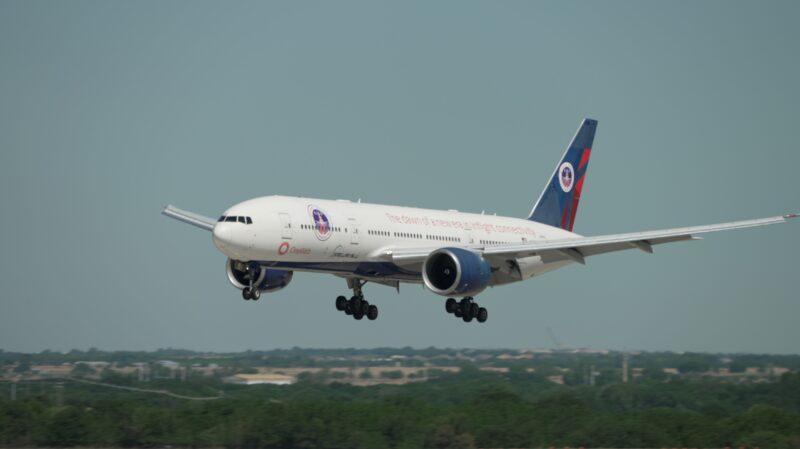
By Mark Holmes
OneWeb and Stellar Blu Solutions have delivered high-speed, low-latency inflight LEO satellite connectivity to a commercial airliner, the two companies announced June 14. This first test flight was conducted aboard a Boeing B777-200LR and took off from Fort Worth Alliance Airport (KAFW), in Texas on May 27th at 15:20 UTC and flew for just over one hour delivering this connectivity experience.
Stellar Blu, has partnered with antenna technology provider Ball Aerospace to incorporate its electronically steered arrays (ESA) into the terminal solution. The new Stellar Blu platform, known as ‘Sidewinder’, will continue flight testing through the remainder of 2022, with a target for certification and availability in mid-2023. This maiden flight represented the culmination of several months’ collaboration between Stellar Blu, OneWeb and Ball Aerospace including ground trials and flight tests.
The test flight crew simultaneously demonstrated the ability to connect Teams calls, 4K YouTube streaming, Netflix, online VR gaming and Nintendo Switch gaming, among other structured performance tests. Maximum speeds of 260Mbps download/80 upload and file transfer scenarios of 5GB demonstrated in approximately 20 seconds. All while operating at well under 100ms of network latency.
“This test flight represents a fantastic milestone for OneWeb. Broadband in-flight connectivity, delivered to a commercial aircraft via LEO satellites and an ESA is now – finally – a reality. Together with our partners Stellar Blu and technology from Ball Aerospace, we are now well and truly on our way to delivering consistently reliable, game-changing, affordable inflight connectivity to commercial aviation users everywhere,” Ben Griffin, vice president Mobility, OneWeb said in a statement.
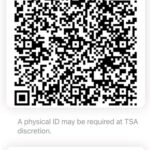
American Airlines Testing Digital Verification for Airport Security Checkpoints
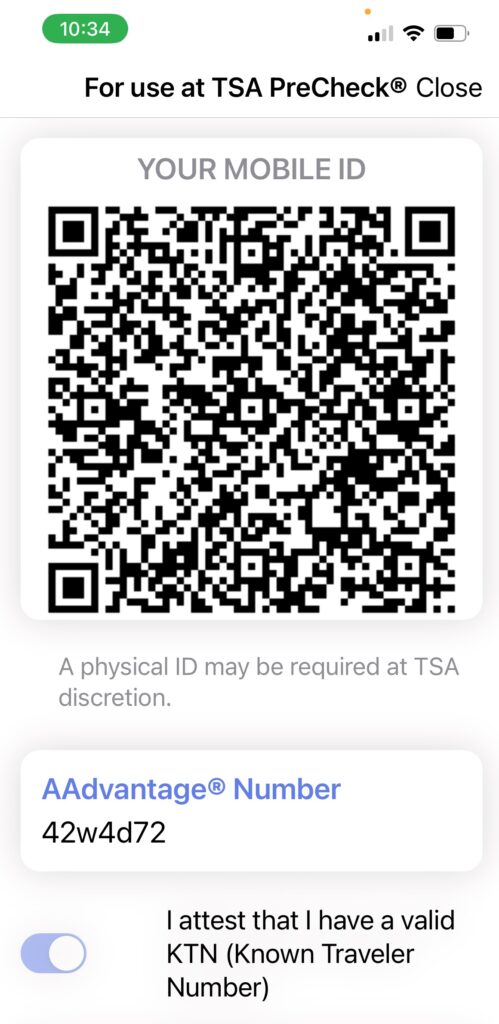
American Airlines recently launched a 60-day pilot project in partnership with the Transportation Security Administration at Dallas Fort Worth International Airport that will evaluate the use of a mobile phone application and facial recognition technology to replace the need for physical identification such as driver’s licenses and passports at checkpoints.
According to a June 22 announcement launching the “American Airlines Mobile ID” pilot, the optional trial will instruct American’s passengers to download the Airside Digital Identity application and verify their identification by scanning their driver’s license or passport and entering their AAdvantage number—American’s passenger loyalty program. Airside’s application uses an identification system provided by Thales that compares the passenger’s passport or driver’s license information with the passport’s embedded near field communication chip or against the individual state’s digital Department of Motor vehicles record for the passenger.
Once this process is completed and the passenger arrives at the airport, they are then instructed to present a QR code on their phone and consent to sharing their mobile identification with TSA. American claims that the entire process at the airport “typically takes less than five seconds.”
Amol Deshmukh, Vice President Solutions, Thales, told Avionics International that the driving force behind the launch of the Mobile ID pilot with American Airlines was to create a more touchless airport checkpoint experience for airline passengers. The Thales executive notes that the technology is not necessarily a new concept, but rather an opportunity for all of the stakeholders involved to understand how they can streamline some of the checkpoints passengers go through in airports.
“Thales is acting as the trusted mobile digital identity technology provider in this case,” Deshmukh said. “We verify that the data coming in is authentic and genuine, and we’re able to verify the issuance trace of each passenger’s ID or passport.”
The American Airlines Mobile ID project, which began in June, is occurring with voluntary American passengers flying out of DFW initially. American has also committed to deploying the technology at Miami International Airport (MIA), Phoenix Sky Harbor International Airport (PHX), Washington Reagan National Airport (DCA), and more airports later this year.
Several other airlines and airports have been increasingly deploying facial recognition, biometrics, and other touchless checkpoint technologies throughout the world as well. The trend was especially accelerated by the COVID-19 pandemic driving airports and airlines to seek methods for reducing passenger touchpoints along their journey.
Another aspect of deploying the American Airlines Mobile ID technology considered by Thales and all of the other partners involved is the privacy of passengers’ personal information.
“The entire process is consent driven from a passenger standpoint. They’re consenting to share the data through this QR code from their phone with TSA and TSA only. Once their Mobile ID is verified through our system, that Mobile ID only exists within their phone, you cannot duplicate it, and sharing it with TSA occurs through an encrypted data feed toward the TSA CAD device. TSA then performs their own verification at the airport, and does not actually store that data once they’re done it gets deleted.”
American has not provided a timeline as to when they will consider expanding the Mobile ID technology to other airports.

SpaceX Works to Educate Airlines on Virtues of Starlink and LEO In-flight Connectivity

By Aaron Karp
SpaceX’s top Starlink executive is leading the drive to convince airlines that Low-Earth Orbit (LEO) satellite-powered in-flight internet services would be superior to current offerings in terms of speed, ease of use, and the ability to provide widespread, consistent coverage—even for transoceanic flights.
Speaking on a panel at the Connected Aviation Intelligence conference earlier this month, Starlink Vice President of Commercial Sales Jonathan Hofeller said current in-flight internet services powered by Geostationary (GEO) satellites will not be able to keep up with the connectivity demands of airline passengers, particularly younger consumers.
The Starlink constellation of more than 2,330 LEO satellites powers internet service for 400,000 consumers and enterprises in 32 countries. Starlink this year has inked deals with Hawaiian Airlines and JSX, a California-based Part 135 public charter operator, to begin equipping aircraft with its LEO-powered in-flight connectivity (IFC) service in 2023. Hawaiian’s service will be free for passengers.
Hofeller said aviation is a potentially significant market for LEO-driven internet services that Starlink is actively targeting, noting that beyond the Hawaiian and JSX contracts are “several more [airline agreements] in the works.”
He added: “We’re obsessive about the passenger experience. We’re going to be on planes here very shortly, so hopefully passengers are wowed by the experience.”
The key differentiator between GEO- and LEO-powered internet services for airlines will be the low latency of LEO options, Hofeller said, explaining that consistent, high-speed connectivity comparable to the “home experience” is not possible with GEO satellites.
“We’re transitioning from a download-heavy model to more of a symmetric type of environment,” he said. “If you look to the future and you believe two-way communication is important, then that latency becomes extremely important, whether it’s co-editing documents or doing real-time FaceTime calls … There are a lot of applications where latency is super important to being productive on an aircraft.”
For this reason, airlines will consider moving to LEO-driven services, according to Philippe Schleret, vice president of aviation for Telesat, the Canadian satellite operator that aims to equip aircraft with LEO IFC capabilities by 2026. “We see a lot of excitement with the airline community about the prospect of having the IFC services over LEO networks,” he told the Connected Aviation Intelligence conference. “It’s really about bringing a superior quality of experience at an affordable price. [LEO can] enable free services with higher throughput and a lot of features. We’re pretty bullish about the prospect of having the vast majority of airline IFC traffic over LEO ultimately.”

Another panelist, OneWeb’s Market Development Director for Business Aviation Jason Sperry, predicted that LEO-powered IFC will be commonplace in the 2030s. “By 2030, you’ll see a considerable amount of aviation traffic on LEO networks,” he said.
Like Starlink, UK-based OneWeb aims to be offering LEO-driven IFC services on aircraft by 2023, but it has not yet announced any agreements with airlines.
Sperry said airlines are concerned with what he calls “the five Cs” when it comes to IFC: cost, coverage, capacity, connection, and consistency. All of these will be improved by LEO-based services, he added.
“You’re really going to see an adoption by the airlines,” Sperry said. “The passenger experience matters and airlines really want to provide a passenger experience that will continue to allow that customer to come back to that airline and not go to another airline. The younger generation is pushing the demand and the expectation to have that aboard the aircraft. Airlines are really looking forward to getting on with LEO.”
Hofeller noted that Starlink’s current consumer-based internet offering provides service within a country’s borders, but airline service will be provided across borders. “The deal we signed with Hawaiian Airlines opens up the transoceanic [coverage],” he said. “So, we have our inter-satellite links, which enables that capability, and that system is being deployed as we speak. We’ll be able to be servicing folks intercontinental early next year.”
Sperry said a big hurdle to overcome is a lack of awareness among airlines about LEO satellites and the IFC capabilities they can provide. “From our perspective, education is important,” he explained. “Each airline has a different kind of mindset in what they understand about the [LEO] networks … The generation now and the generation upcoming really demands this on aircraft.”
He added it is “not a question of if airlines are going to do it, but when.”
Hofeller said many airlines currently have a view that technologies such as IFC should be upgraded only every 10 to 12 years. “That’s completely misaligned with how technology develops,” he said, adding: “If you’re ultimately looking at what the best thing is for the passenger experience, you have to have the flexibility to get the best product for them” as soon as it is available.
Hofeller predicted airlines will be convinced when Starlink’s services are on aircraft and “we show airlines the technology and what can be done.” He added: “The product that we have is simple, it’s lightweight, easy to install, and easy to de-install.”
He said Starlink’s LEO satellite constellation will continue to grow and provide increasingly robust coverage. The company is building eight satellites a day at its Seattle-area manufacturing facility. Hofeller added that Starlink is telling airlines it will handle all aspects of its service, enabling fast troubleshooting.
“I think the beauty of our system is that we are completely vertically integrated,” he explained.
But some airlines will need to be persuaded to end current IFC contracts early, Hofeller said: “I know the aviation industry is focused on long-term cycles and that doesn’t necessarily align with the adoption of new technologies, but we’re hoping to disrupt that [and convince airlines] not to be stuck into a legacy contract that’s seven years old.”
Just as airlines need to learn about Starlink and LEO satellites, Starlink needs to become more familiar with the airline industry, Hofeller conceded: “We’re new at this. We’re going to adapt … We’re not stuck in a particular way.”

#CAIPODCAST Ep. 82: Shift5 CGO Talks Developing an Aircraft Networking Security Program

Michael Weigand is the chief growth officer of Shift5 Inc., a startup firm providing cybersecurity services across commercial and military segments of aviation, rail and other forms of transportation.
Weigand is a former U.S. Army cyber officer who co-founded Shift5 in 2019. During his live presentation given at the 2022 Connected Aviation Intelligence Summit, Weigand gives an in-depth technical overview of how connected aircraft systems work, why they’re vulnerable how airlines can develop an Aircraft Network Security Program.
The FAA first established its Aircraft Network Security Program in 2015 as an Advisory Circular for airlines that operate aircraft featuring connectivity. Weigand goes well beyond explaining how airlines can develop an ANSP into giving a detailed explanation as to how specific aircraft computers and data bus networks function, and why he believes there is no such thing as an “un-connected” aircraft for airlines anymore even with those that do not specifically feature passenger-facing connectivity onboard.
Below is an interesting observation given by Weigand during the presentation:
“I want to suggest that the industry not focus on the infotainment and passenger connectivity systems as the primary cyber threat to the aircraft. Candidly, from a security professional’s perspective I don’t care that the passengers don’t have Wi-Fi, because that system was degraded by a malicious actor. We care about flight safety first and foremost, it’s really the flight deck, it’s the green side of the aircraft that the conversation needs to be focused on, and I think previous security research done initially by the hacking and academia community has kind of mislead the industry to talk about what’s going on in the cabin and not in the flight deck.”
Have suggestions or topics we should focus on in the next episode? Email the host, Woodrow Bellamy at [email protected], or drop him a line on Twitter @WbellamyIIIAC.
Listen to this episode below, or check it out on iTunes or Google Play If you like the show, subscribe on your favorite podcast app to get new episodes as soon as they’re released.


